Primark's Project Management Success: A Case Study
VerifiedAdded on 2019/09/20
|20
|4560
|290
Report
AI Summary
The assignment content discusses Primark's implementation of project management processes and methodologies to overcome challenges faced by the company. The process involves phases such as project conception, initialization, definition, planning, launch, execution, performance, control, and close. By implementing these processes, Primark has successfully incorporated corporate social responsibility into its workflow, improved supply chain management, and ensured compliance with environment safety and labor laws. The company has also achieved its objective of making the packaging and industrial set-up environment-friendly and providing services without charge to poor or needy individuals.
Contribute Materials
Your contribution can guide someone’s learning journey. Share your
documents today.
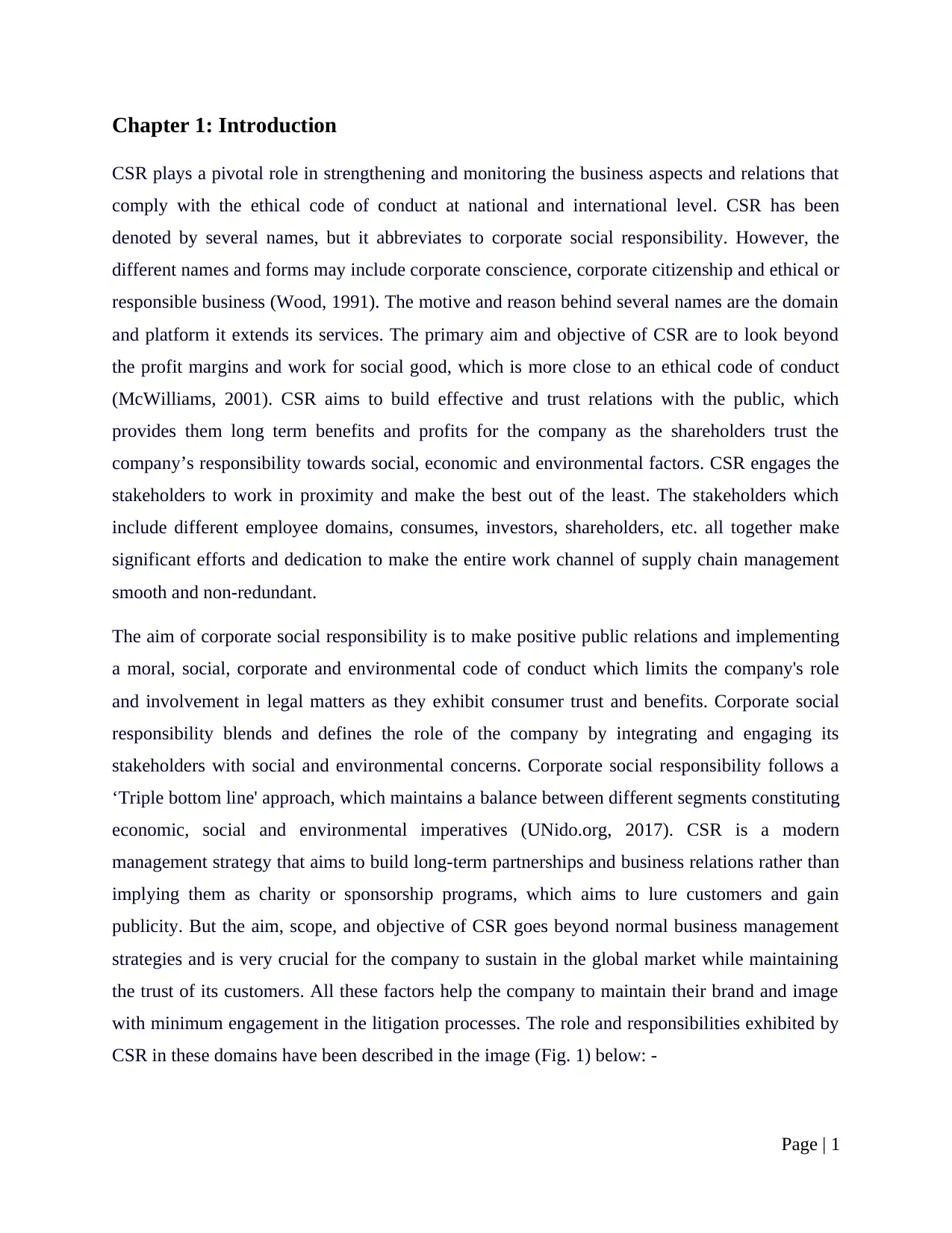
Chapter 1: Introduction
CSR plays a pivotal role in strengthening and monitoring the business aspects and relations that
comply with the ethical code of conduct at national and international level. CSR has been
denoted by several names, but it abbreviates to corporate social responsibility. However, the
different names and forms may include corporate conscience, corporate citizenship and ethical or
responsible business (Wood, 1991). The motive and reason behind several names are the domain
and platform it extends its services. The primary aim and objective of CSR are to look beyond
the profit margins and work for social good, which is more close to an ethical code of conduct
(McWilliams, 2001). CSR aims to build effective and trust relations with the public, which
provides them long term benefits and profits for the company as the shareholders trust the
company’s responsibility towards social, economic and environmental factors. CSR engages the
stakeholders to work in proximity and make the best out of the least. The stakeholders which
include different employee domains, consumes, investors, shareholders, etc. all together make
significant efforts and dedication to make the entire work channel of supply chain management
smooth and non-redundant.
The aim of corporate social responsibility is to make positive public relations and implementing
a moral, social, corporate and environmental code of conduct which limits the company's role
and involvement in legal matters as they exhibit consumer trust and benefits. Corporate social
responsibility blends and defines the role of the company by integrating and engaging its
stakeholders with social and environmental concerns. Corporate social responsibility follows a
‘Triple bottom line' approach, which maintains a balance between different segments constituting
economic, social and environmental imperatives (UNido.org, 2017). CSR is a modern
management strategy that aims to build long-term partnerships and business relations rather than
implying them as charity or sponsorship programs, which aims to lure customers and gain
publicity. But the aim, scope, and objective of CSR goes beyond normal business management
strategies and is very crucial for the company to sustain in the global market while maintaining
the trust of its customers. All these factors help the company to maintain their brand and image
with minimum engagement in the litigation processes. The role and responsibilities exhibited by
CSR in these domains have been described in the image (Fig. 1) below: -
Page | 1
CSR plays a pivotal role in strengthening and monitoring the business aspects and relations that
comply with the ethical code of conduct at national and international level. CSR has been
denoted by several names, but it abbreviates to corporate social responsibility. However, the
different names and forms may include corporate conscience, corporate citizenship and ethical or
responsible business (Wood, 1991). The motive and reason behind several names are the domain
and platform it extends its services. The primary aim and objective of CSR are to look beyond
the profit margins and work for social good, which is more close to an ethical code of conduct
(McWilliams, 2001). CSR aims to build effective and trust relations with the public, which
provides them long term benefits and profits for the company as the shareholders trust the
company’s responsibility towards social, economic and environmental factors. CSR engages the
stakeholders to work in proximity and make the best out of the least. The stakeholders which
include different employee domains, consumes, investors, shareholders, etc. all together make
significant efforts and dedication to make the entire work channel of supply chain management
smooth and non-redundant.
The aim of corporate social responsibility is to make positive public relations and implementing
a moral, social, corporate and environmental code of conduct which limits the company's role
and involvement in legal matters as they exhibit consumer trust and benefits. Corporate social
responsibility blends and defines the role of the company by integrating and engaging its
stakeholders with social and environmental concerns. Corporate social responsibility follows a
‘Triple bottom line' approach, which maintains a balance between different segments constituting
economic, social and environmental imperatives (UNido.org, 2017). CSR is a modern
management strategy that aims to build long-term partnerships and business relations rather than
implying them as charity or sponsorship programs, which aims to lure customers and gain
publicity. But the aim, scope, and objective of CSR goes beyond normal business management
strategies and is very crucial for the company to sustain in the global market while maintaining
the trust of its customers. All these factors help the company to maintain their brand and image
with minimum engagement in the litigation processes. The role and responsibilities exhibited by
CSR in these domains have been described in the image (Fig. 1) below: -
Page | 1
Secure Best Marks with AI Grader
Need help grading? Try our AI Grader for instant feedback on your assignments.
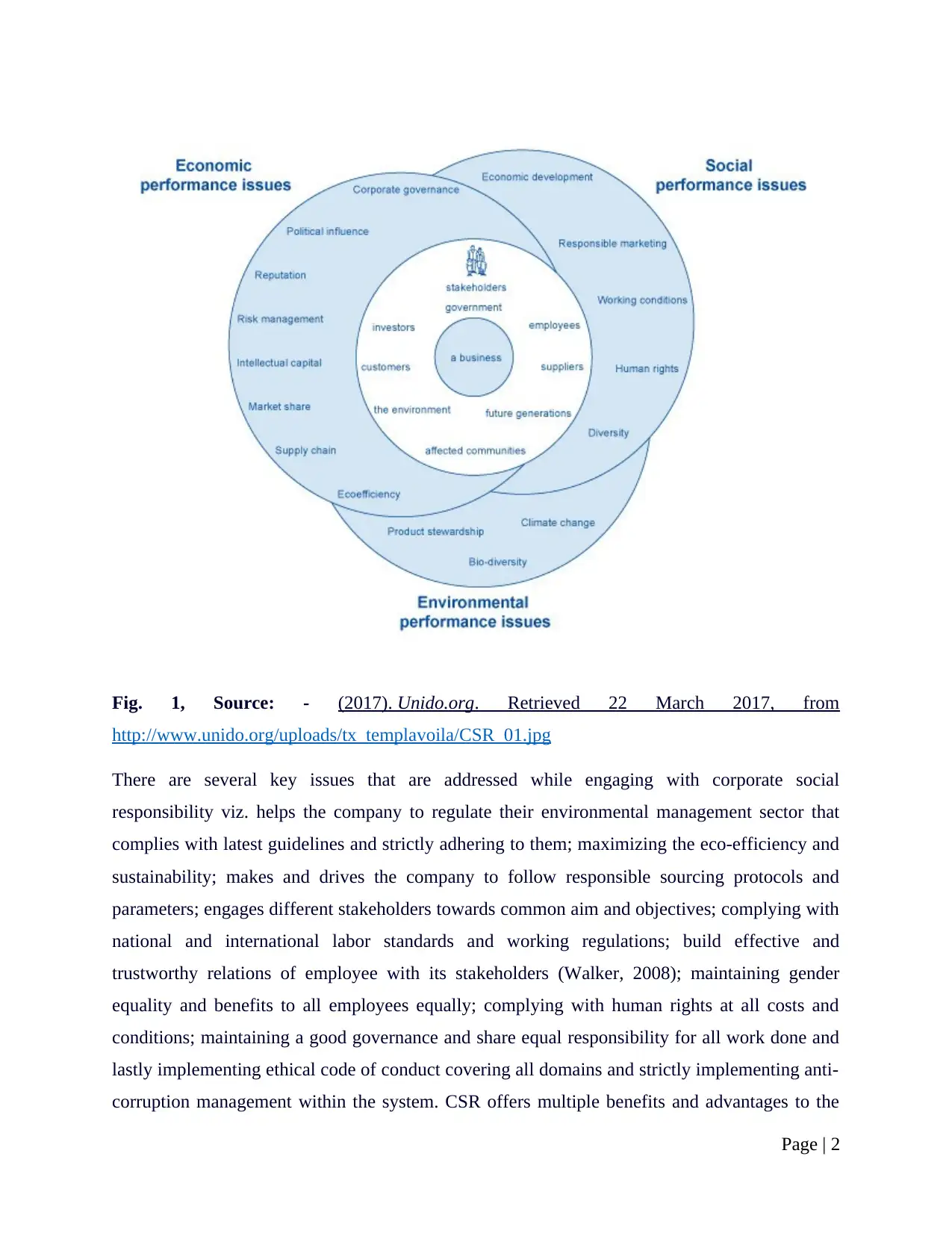
Fig. 1, Source: - (2017). Unido.org. Retrieved 22 March 2017, from
http://www.unido.org/uploads/tx_templavoila/CSR_01.jpg
There are several key issues that are addressed while engaging with corporate social
responsibility viz. helps the company to regulate their environmental management sector that
complies with latest guidelines and strictly adhering to them; maximizing the eco-efficiency and
sustainability; makes and drives the company to follow responsible sourcing protocols and
parameters; engages different stakeholders towards common aim and objectives; complying with
national and international labor standards and working regulations; build effective and
trustworthy relations of employee with its stakeholders (Walker, 2008); maintaining gender
equality and benefits to all employees equally; complying with human rights at all costs and
conditions; maintaining a good governance and share equal responsibility for all work done and
lastly implementing ethical code of conduct covering all domains and strictly implementing anti-
corruption management within the system. CSR offers multiple benefits and advantages to the
Page | 2
http://www.unido.org/uploads/tx_templavoila/CSR_01.jpg
There are several key issues that are addressed while engaging with corporate social
responsibility viz. helps the company to regulate their environmental management sector that
complies with latest guidelines and strictly adhering to them; maximizing the eco-efficiency and
sustainability; makes and drives the company to follow responsible sourcing protocols and
parameters; engages different stakeholders towards common aim and objectives; complying with
national and international labor standards and working regulations; build effective and
trustworthy relations of employee with its stakeholders (Walker, 2008); maintaining gender
equality and benefits to all employees equally; complying with human rights at all costs and
conditions; maintaining a good governance and share equal responsibility for all work done and
lastly implementing ethical code of conduct covering all domains and strictly implementing anti-
corruption management within the system. CSR offers multiple benefits and advantages to the
Page | 2
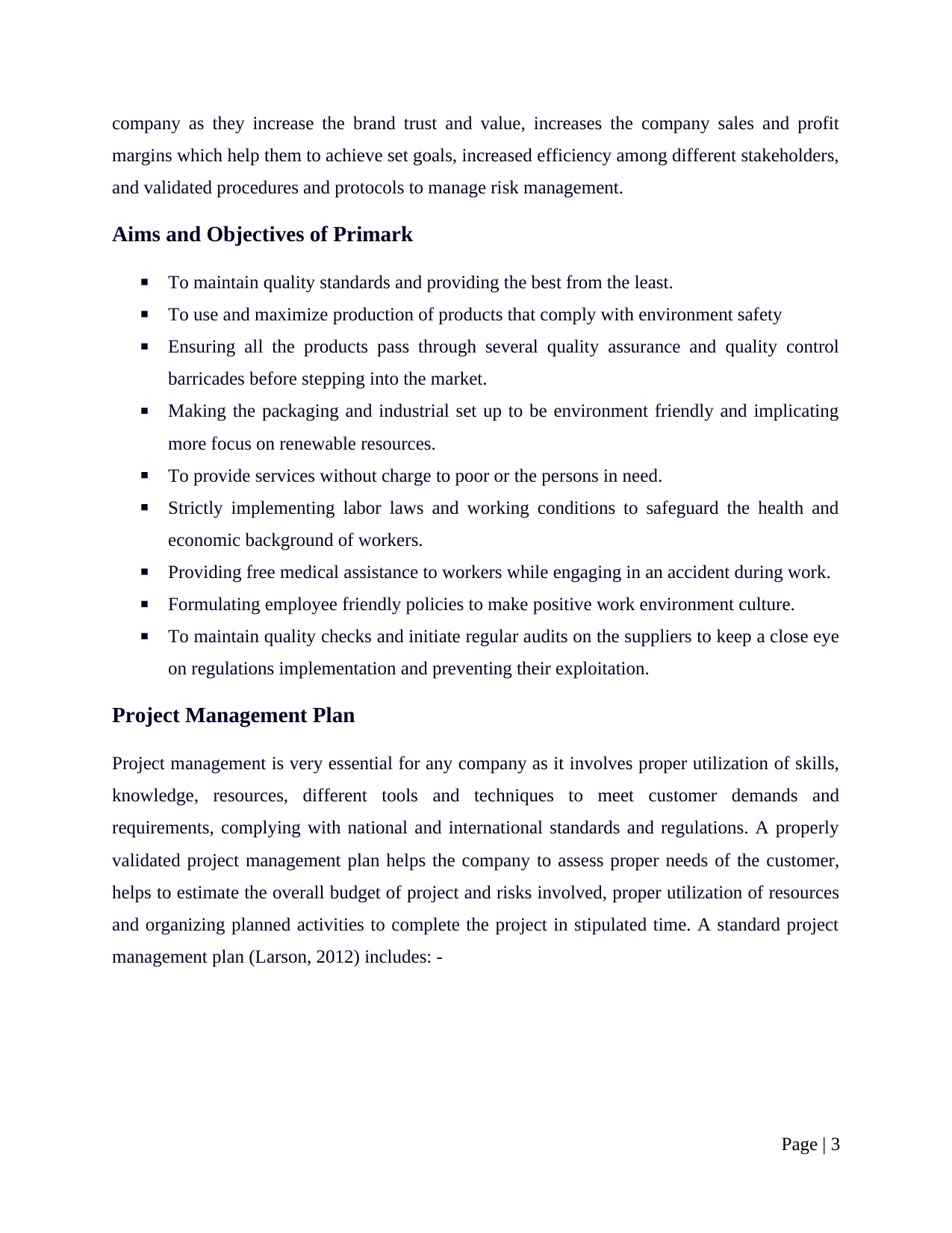
company as they increase the brand trust and value, increases the company sales and profit
margins which help them to achieve set goals, increased efficiency among different stakeholders,
and validated procedures and protocols to manage risk management.
Aims and Objectives of Primark
To maintain quality standards and providing the best from the least.
To use and maximize production of products that comply with environment safety
Ensuring all the products pass through several quality assurance and quality control
barricades before stepping into the market.
Making the packaging and industrial set up to be environment friendly and implicating
more focus on renewable resources.
To provide services without charge to poor or the persons in need.
Strictly implementing labor laws and working conditions to safeguard the health and
economic background of workers.
Providing free medical assistance to workers while engaging in an accident during work.
Formulating employee friendly policies to make positive work environment culture.
To maintain quality checks and initiate regular audits on the suppliers to keep a close eye
on regulations implementation and preventing their exploitation.
Project Management Plan
Project management is very essential for any company as it involves proper utilization of skills,
knowledge, resources, different tools and techniques to meet customer demands and
requirements, complying with national and international standards and regulations. A properly
validated project management plan helps the company to assess proper needs of the customer,
helps to estimate the overall budget of project and risks involved, proper utilization of resources
and organizing planned activities to complete the project in stipulated time. A standard project
management plan (Larson, 2012) includes: -
Page | 3
margins which help them to achieve set goals, increased efficiency among different stakeholders,
and validated procedures and protocols to manage risk management.
Aims and Objectives of Primark
To maintain quality standards and providing the best from the least.
To use and maximize production of products that comply with environment safety
Ensuring all the products pass through several quality assurance and quality control
barricades before stepping into the market.
Making the packaging and industrial set up to be environment friendly and implicating
more focus on renewable resources.
To provide services without charge to poor or the persons in need.
Strictly implementing labor laws and working conditions to safeguard the health and
economic background of workers.
Providing free medical assistance to workers while engaging in an accident during work.
Formulating employee friendly policies to make positive work environment culture.
To maintain quality checks and initiate regular audits on the suppliers to keep a close eye
on regulations implementation and preventing their exploitation.
Project Management Plan
Project management is very essential for any company as it involves proper utilization of skills,
knowledge, resources, different tools and techniques to meet customer demands and
requirements, complying with national and international standards and regulations. A properly
validated project management plan helps the company to assess proper needs of the customer,
helps to estimate the overall budget of project and risks involved, proper utilization of resources
and organizing planned activities to complete the project in stipulated time. A standard project
management plan (Larson, 2012) includes: -
Page | 3
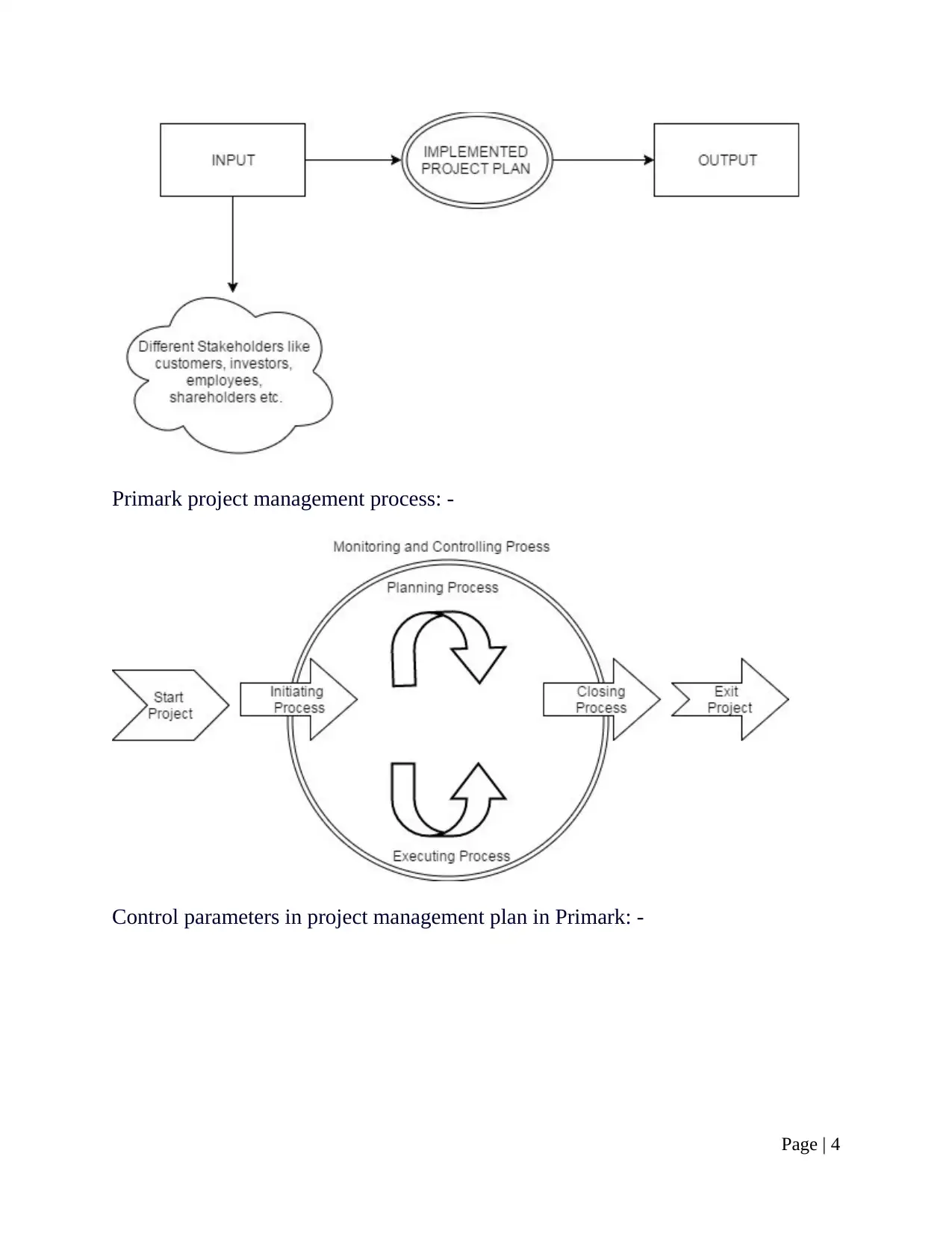
Primark project management process: -
Control parameters in project management plan in Primark: -
Page | 4
Control parameters in project management plan in Primark: -
Page | 4
Paraphrase This Document
Need a fresh take? Get an instant paraphrase of this document with our AI Paraphraser
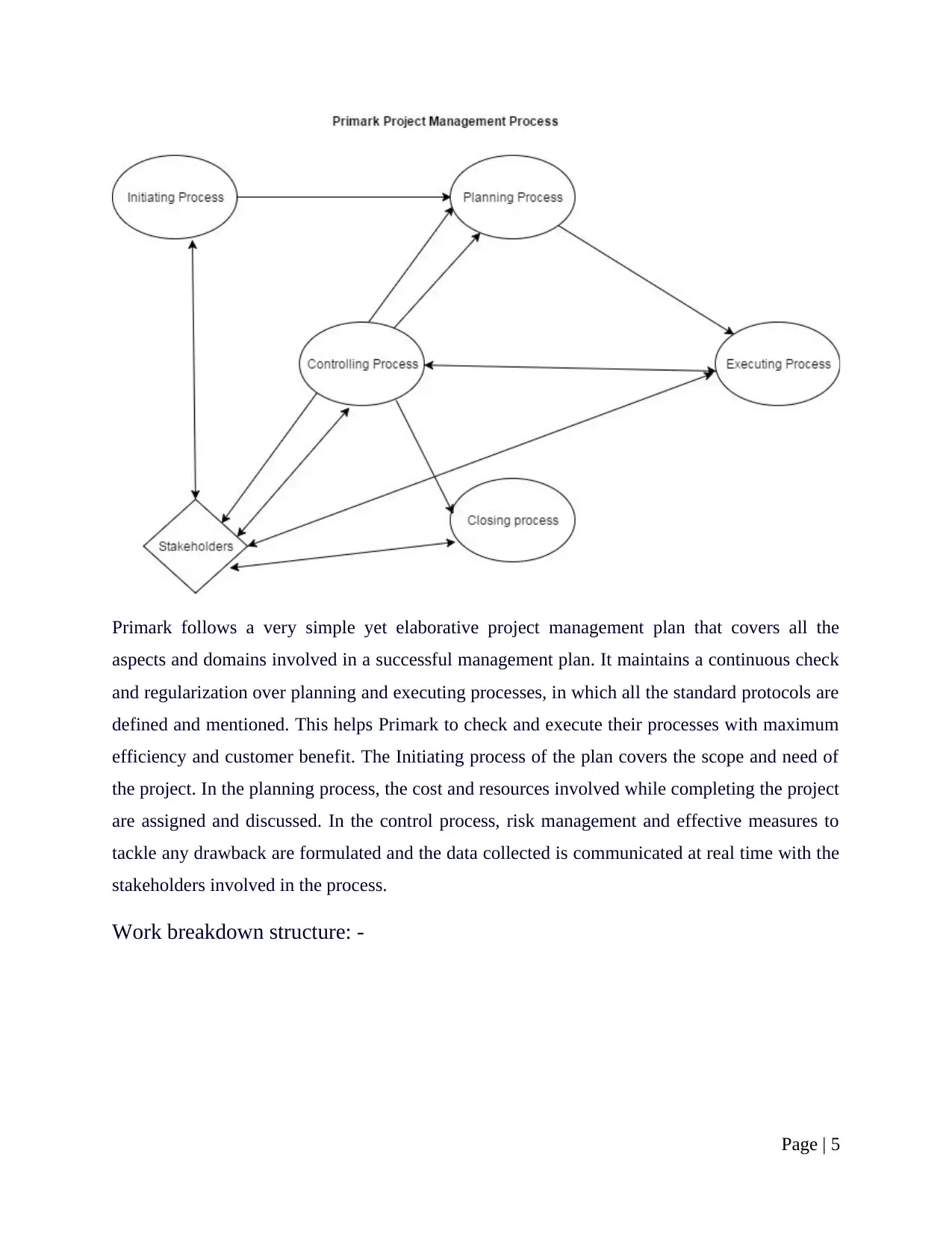
Primark follows a very simple yet elaborative project management plan that covers all the
aspects and domains involved in a successful management plan. It maintains a continuous check
and regularization over planning and executing processes, in which all the standard protocols are
defined and mentioned. This helps Primark to check and execute their processes with maximum
efficiency and customer benefit. The Initiating process of the plan covers the scope and need of
the project. In the planning process, the cost and resources involved while completing the project
are assigned and discussed. In the control process, risk management and effective measures to
tackle any drawback are formulated and the data collected is communicated at real time with the
stakeholders involved in the process.
Work breakdown structure: -
Page | 5
aspects and domains involved in a successful management plan. It maintains a continuous check
and regularization over planning and executing processes, in which all the standard protocols are
defined and mentioned. This helps Primark to check and execute their processes with maximum
efficiency and customer benefit. The Initiating process of the plan covers the scope and need of
the project. In the planning process, the cost and resources involved while completing the project
are assigned and discussed. In the control process, risk management and effective measures to
tackle any drawback are formulated and the data collected is communicated at real time with the
stakeholders involved in the process.
Work breakdown structure: -
Page | 5
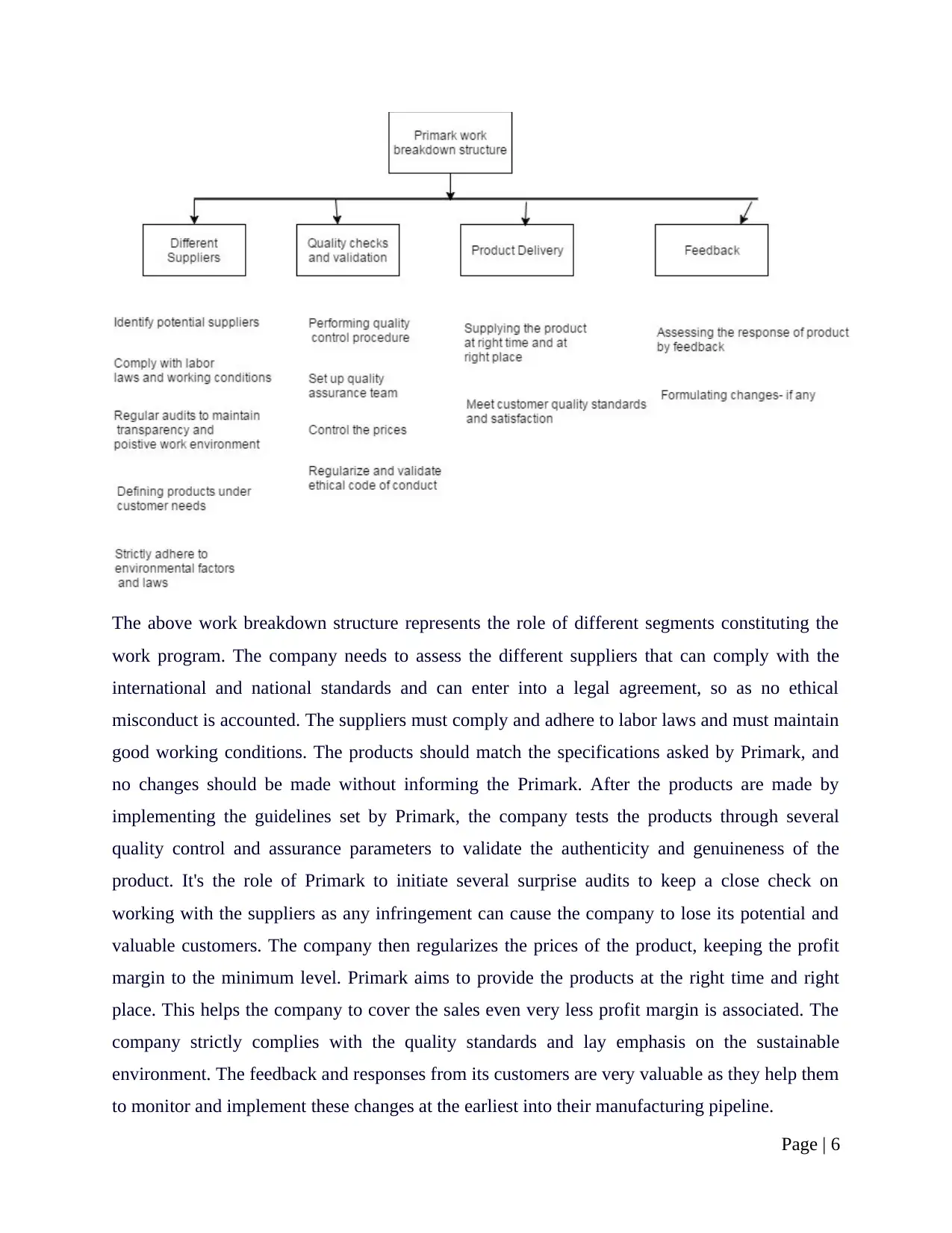
The above work breakdown structure represents the role of different segments constituting the
work program. The company needs to assess the different suppliers that can comply with the
international and national standards and can enter into a legal agreement, so as no ethical
misconduct is accounted. The suppliers must comply and adhere to labor laws and must maintain
good working conditions. The products should match the specifications asked by Primark, and
no changes should be made without informing the Primark. After the products are made by
implementing the guidelines set by Primark, the company tests the products through several
quality control and assurance parameters to validate the authenticity and genuineness of the
product. It's the role of Primark to initiate several surprise audits to keep a close check on
working with the suppliers as any infringement can cause the company to lose its potential and
valuable customers. The company then regularizes the prices of the product, keeping the profit
margin to the minimum level. Primark aims to provide the products at the right time and right
place. This helps the company to cover the sales even very less profit margin is associated. The
company strictly complies with the quality standards and lay emphasis on the sustainable
environment. The feedback and responses from its customers are very valuable as they help them
to monitor and implement these changes at the earliest into their manufacturing pipeline.
Page | 6
work program. The company needs to assess the different suppliers that can comply with the
international and national standards and can enter into a legal agreement, so as no ethical
misconduct is accounted. The suppliers must comply and adhere to labor laws and must maintain
good working conditions. The products should match the specifications asked by Primark, and
no changes should be made without informing the Primark. After the products are made by
implementing the guidelines set by Primark, the company tests the products through several
quality control and assurance parameters to validate the authenticity and genuineness of the
product. It's the role of Primark to initiate several surprise audits to keep a close check on
working with the suppliers as any infringement can cause the company to lose its potential and
valuable customers. The company then regularizes the prices of the product, keeping the profit
margin to the minimum level. Primark aims to provide the products at the right time and right
place. This helps the company to cover the sales even very less profit margin is associated. The
company strictly complies with the quality standards and lay emphasis on the sustainable
environment. The feedback and responses from its customers are very valuable as they help them
to monitor and implement these changes at the earliest into their manufacturing pipeline.
Page | 6
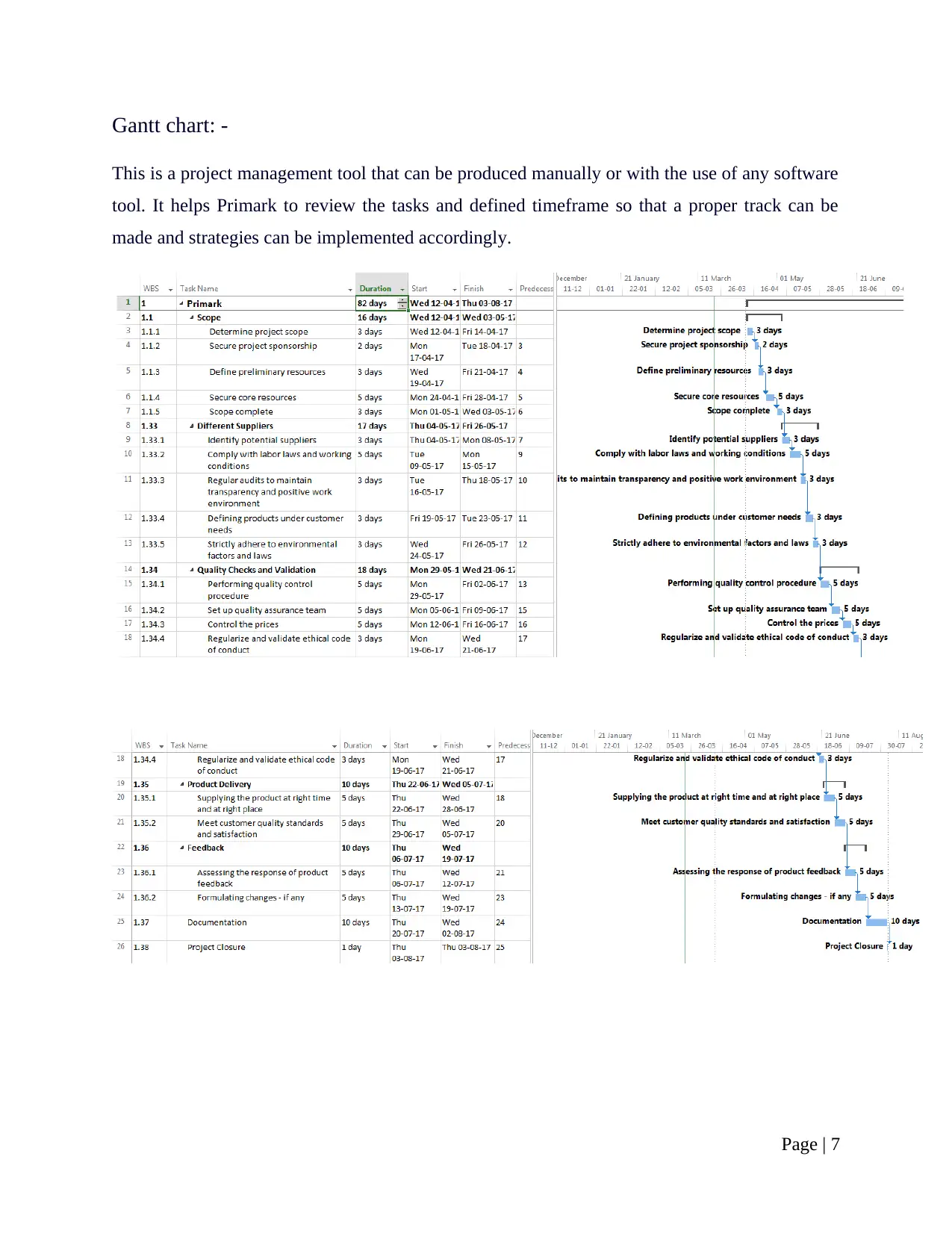
Gantt chart: -
This is a project management tool that can be produced manually or with the use of any software
tool. It helps Primark to review the tasks and defined timeframe so that a proper track can be
made and strategies can be implemented accordingly.
Page | 7
This is a project management tool that can be produced manually or with the use of any software
tool. It helps Primark to review the tasks and defined timeframe so that a proper track can be
made and strategies can be implemented accordingly.
Page | 7
Secure Best Marks with AI Grader
Need help grading? Try our AI Grader for instant feedback on your assignments.
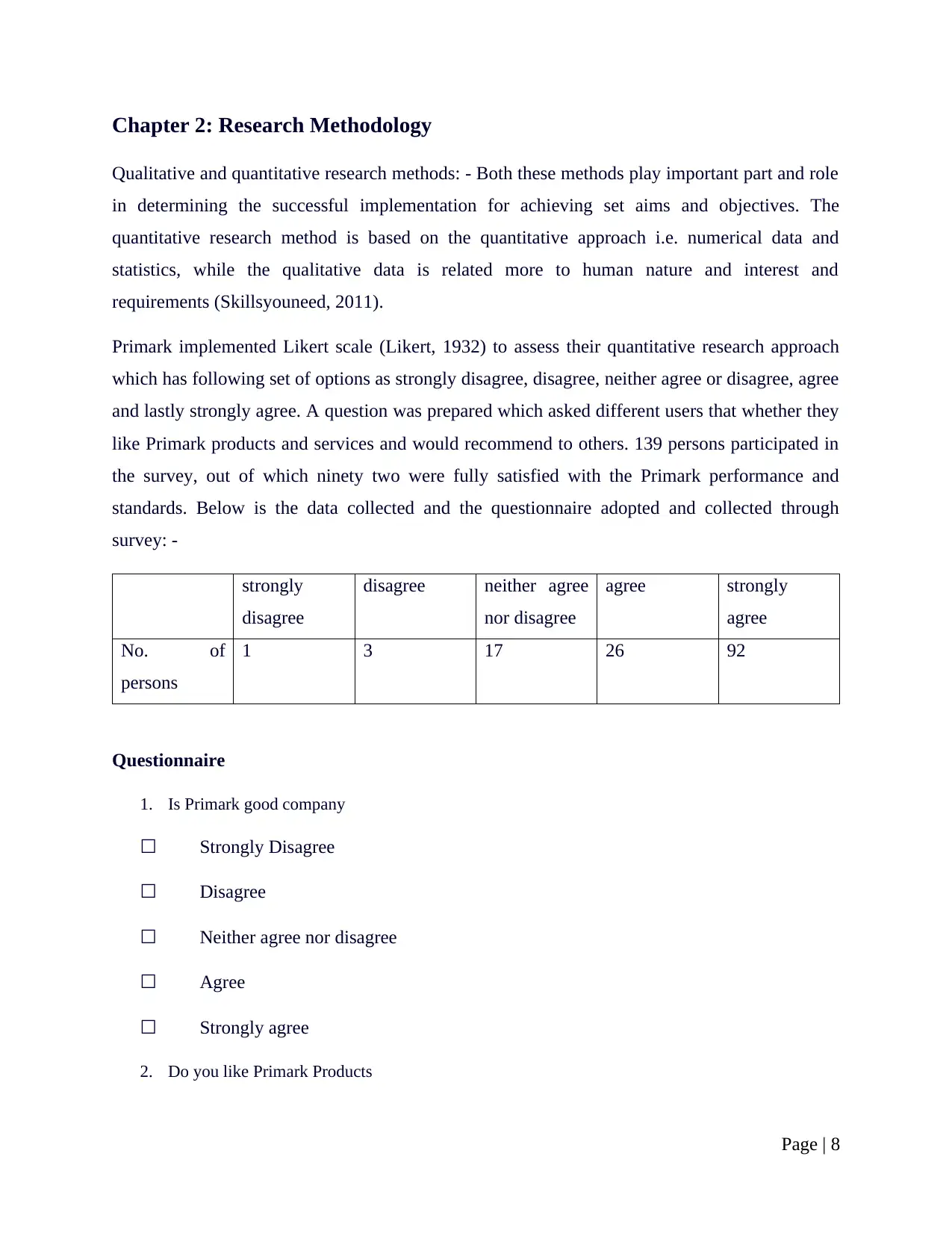
Chapter 2: Research Methodology
Qualitative and quantitative research methods: - Both these methods play important part and role
in determining the successful implementation for achieving set aims and objectives. The
quantitative research method is based on the quantitative approach i.e. numerical data and
statistics, while the qualitative data is related more to human nature and interest and
requirements (Skillsyouneed, 2011).
Primark implemented Likert scale (Likert, 1932) to assess their quantitative research approach
which has following set of options as strongly disagree, disagree, neither agree or disagree, agree
and lastly strongly agree. A question was prepared which asked different users that whether they
like Primark products and services and would recommend to others. 139 persons participated in
the survey, out of which ninety two were fully satisfied with the Primark performance and
standards. Below is the data collected and the questionnaire adopted and collected through
survey: -
strongly
disagree
disagree neither agree
nor disagree
agree strongly
agree
No. of
persons
1 3 17 26 92
Questionnaire
1. Is Primark good company
☐ Strongly Disagree
☐ Disagree
☐ Neither agree nor disagree
☐ Agree
☐ Strongly agree
2. Do you like Primark Products
Page | 8
Qualitative and quantitative research methods: - Both these methods play important part and role
in determining the successful implementation for achieving set aims and objectives. The
quantitative research method is based on the quantitative approach i.e. numerical data and
statistics, while the qualitative data is related more to human nature and interest and
requirements (Skillsyouneed, 2011).
Primark implemented Likert scale (Likert, 1932) to assess their quantitative research approach
which has following set of options as strongly disagree, disagree, neither agree or disagree, agree
and lastly strongly agree. A question was prepared which asked different users that whether they
like Primark products and services and would recommend to others. 139 persons participated in
the survey, out of which ninety two were fully satisfied with the Primark performance and
standards. Below is the data collected and the questionnaire adopted and collected through
survey: -
strongly
disagree
disagree neither agree
nor disagree
agree strongly
agree
No. of
persons
1 3 17 26 92
Questionnaire
1. Is Primark good company
☐ Strongly Disagree
☐ Disagree
☐ Neither agree nor disagree
☐ Agree
☐ Strongly agree
2. Do you like Primark Products
Page | 8
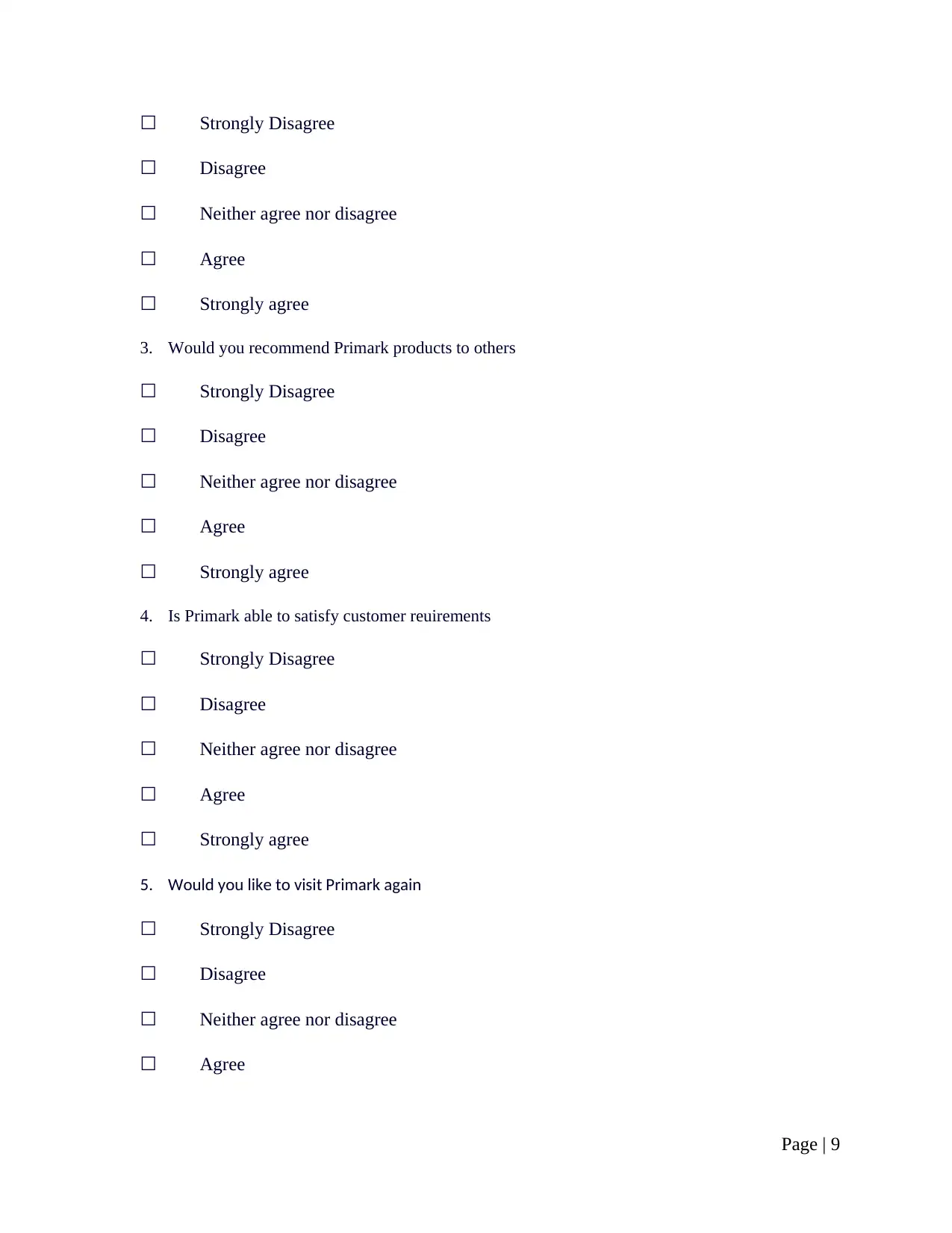
☐ Strongly Disagree
☐ Disagree
☐ Neither agree nor disagree
☐ Agree
☐ Strongly agree
3. Would you recommend Primark products to others
☐ Strongly Disagree
☐ Disagree
☐ Neither agree nor disagree
☐ Agree
☐ Strongly agree
4. Is Primark able to satisfy customer reuirements
☐ Strongly Disagree
☐ Disagree
☐ Neither agree nor disagree
☐ Agree
☐ Strongly agree
5. Would you like to visit Primark again
☐ Strongly Disagree
☐ Disagree
☐ Neither agree nor disagree
☐ Agree
Page | 9
☐ Disagree
☐ Neither agree nor disagree
☐ Agree
☐ Strongly agree
3. Would you recommend Primark products to others
☐ Strongly Disagree
☐ Disagree
☐ Neither agree nor disagree
☐ Agree
☐ Strongly agree
4. Is Primark able to satisfy customer reuirements
☐ Strongly Disagree
☐ Disagree
☐ Neither agree nor disagree
☐ Agree
☐ Strongly agree
5. Would you like to visit Primark again
☐ Strongly Disagree
☐ Disagree
☐ Neither agree nor disagree
☐ Agree
Page | 9

☐ Strongly agree
However, the statistical data collected after sales can also be calculated and defined to assess
company's growth and sales margin. The higher the sales with less profit margin leads to higher
brand value and trust among people as it meets their requirements. There are several different
approaches and methodologies that can be implemented to collect the quantitative data, which
includes: -
Surveys- the surveys offer a great potential and insight to the data as they may be
conducted online, by telephonic conversations, or in person. These represent the B2B and
B2C point of communication module and process. The survey data is based on a set of
questions that are set prior, and the customers need to answer them. Although the data
collected does not offer much reliability as they can be filled and forged by anyone.
Observations – They have a high potential for implying quantitative approach, but the
process is redundant and takes a lot of time to complete and assess. It uses coding of the
data recognized and documented through observations and translating them into
statistical form.
Secondary data – Primark uses the data from the company accounts like the balance
sheet, accounts statement, profit and sale margins, etc. any data that correspond to
investment and procurement. This is the most reliable method which is being used by
Primark. Below is the data of two years that compare the sales and profit margins of
Primark: -
Year 2015 Year 2016 (After CSR approach)
Sales 36 billion dollars Sales 52 billion dollars
Amount spend for
production
7.5 billion dollars Amount spend for
production
8.2 billion dollars
Other resources cost 6 billion dollars Other resources cost 8 billion dollars
Employee salary 10 billion dollars Employee salary 13 billion dollars
Benefits to employee
under various
schemes
5 billion dollars Benefits to
employee under
various schemes
10 billion dollars
Infrastructural cost 3 billion dollars Infrastructural cost 4 billion dollars
Page | 10
However, the statistical data collected after sales can also be calculated and defined to assess
company's growth and sales margin. The higher the sales with less profit margin leads to higher
brand value and trust among people as it meets their requirements. There are several different
approaches and methodologies that can be implemented to collect the quantitative data, which
includes: -
Surveys- the surveys offer a great potential and insight to the data as they may be
conducted online, by telephonic conversations, or in person. These represent the B2B and
B2C point of communication module and process. The survey data is based on a set of
questions that are set prior, and the customers need to answer them. Although the data
collected does not offer much reliability as they can be filled and forged by anyone.
Observations – They have a high potential for implying quantitative approach, but the
process is redundant and takes a lot of time to complete and assess. It uses coding of the
data recognized and documented through observations and translating them into
statistical form.
Secondary data – Primark uses the data from the company accounts like the balance
sheet, accounts statement, profit and sale margins, etc. any data that correspond to
investment and procurement. This is the most reliable method which is being used by
Primark. Below is the data of two years that compare the sales and profit margins of
Primark: -
Year 2015 Year 2016 (After CSR approach)
Sales 36 billion dollars Sales 52 billion dollars
Amount spend for
production
7.5 billion dollars Amount spend for
production
8.2 billion dollars
Other resources cost 6 billion dollars Other resources cost 8 billion dollars
Employee salary 10 billion dollars Employee salary 13 billion dollars
Benefits to employee
under various
schemes
5 billion dollars Benefits to
employee under
various schemes
10 billion dollars
Infrastructural cost 3 billion dollars Infrastructural cost 4 billion dollars
Page | 10
Paraphrase This Document
Need a fresh take? Get an instant paraphrase of this document with our AI Paraphraser

and maintenance and maintenance
Profit margin 4.5 billion dollars Profit margin 8.8 billion dollars
No. of customers 18 lakhs No. of customers 30 lakhs
Primark implemented CSR approach and as a result their customers increased by two third from
previous year. The statistical data shows that Primark has invested too much to employee salary
and providing them benefits, which was one of the reason they started losing their brand value.
The company has lowered the procurement cost by nearly 3% by identifying potential suppliers,
as in 2015 the money invested was 20% of the total sales.
Other approaches implemented by Primark were rigorous and methodology to search for an
appropriate supplier that can comply with Primark specifications. The assessment of suppliers is
mandatory and essential as it can help the company to allocate the budget and resources
(Kozlenkova, 2016). The quality of the raw materials being used for formulating products can be
checked initially, and the working environment can be assessed by the company. Primark can
also know the responsibility shared by the supplier while manufacturing towards environment
and ethics involved. The ethics correspond to the working environment, their interests and socio
– economic parameter. These are essential to consider as they form the core of the company,
which makes them different from other companies around the world. After the product is
manufactured as per the standards set by Primark and guidelines, the product is received by
Primark and is subjected to various quality control processes and checks. This is done to verify
the authenticity and standard of the product. The company reinvestigates the parameters
subjected and to find out any possible flaw while manufacturing of the product. This method and
step are essential as it can involve loosing of potential customers. For this entire quality checks,
Primark needs to set up quality control and assurance teams. The quality control team main area
of focus will be subjected to perform testing and checks on the products that whether they
comply with the national and international standards and quality assurance role will be defined
and limited to documentation od entire channel process, which can be used in future for any
correspondence. Primark uses online surveys to get customer feedback contributing to a
qualitative approach parameter. This helped them to get more insight regarding the customer
satisfaction and their products standard. Primark can engage their stakeholders like the research
Page | 11
Profit margin 4.5 billion dollars Profit margin 8.8 billion dollars
No. of customers 18 lakhs No. of customers 30 lakhs
Primark implemented CSR approach and as a result their customers increased by two third from
previous year. The statistical data shows that Primark has invested too much to employee salary
and providing them benefits, which was one of the reason they started losing their brand value.
The company has lowered the procurement cost by nearly 3% by identifying potential suppliers,
as in 2015 the money invested was 20% of the total sales.
Other approaches implemented by Primark were rigorous and methodology to search for an
appropriate supplier that can comply with Primark specifications. The assessment of suppliers is
mandatory and essential as it can help the company to allocate the budget and resources
(Kozlenkova, 2016). The quality of the raw materials being used for formulating products can be
checked initially, and the working environment can be assessed by the company. Primark can
also know the responsibility shared by the supplier while manufacturing towards environment
and ethics involved. The ethics correspond to the working environment, their interests and socio
– economic parameter. These are essential to consider as they form the core of the company,
which makes them different from other companies around the world. After the product is
manufactured as per the standards set by Primark and guidelines, the product is received by
Primark and is subjected to various quality control processes and checks. This is done to verify
the authenticity and standard of the product. The company reinvestigates the parameters
subjected and to find out any possible flaw while manufacturing of the product. This method and
step are essential as it can involve loosing of potential customers. For this entire quality checks,
Primark needs to set up quality control and assurance teams. The quality control team main area
of focus will be subjected to perform testing and checks on the products that whether they
comply with the national and international standards and quality assurance role will be defined
and limited to documentation od entire channel process, which can be used in future for any
correspondence. Primark uses online surveys to get customer feedback contributing to a
qualitative approach parameter. This helped them to get more insight regarding the customer
satisfaction and their products standard. Primark can engage their stakeholders like the research
Page | 11
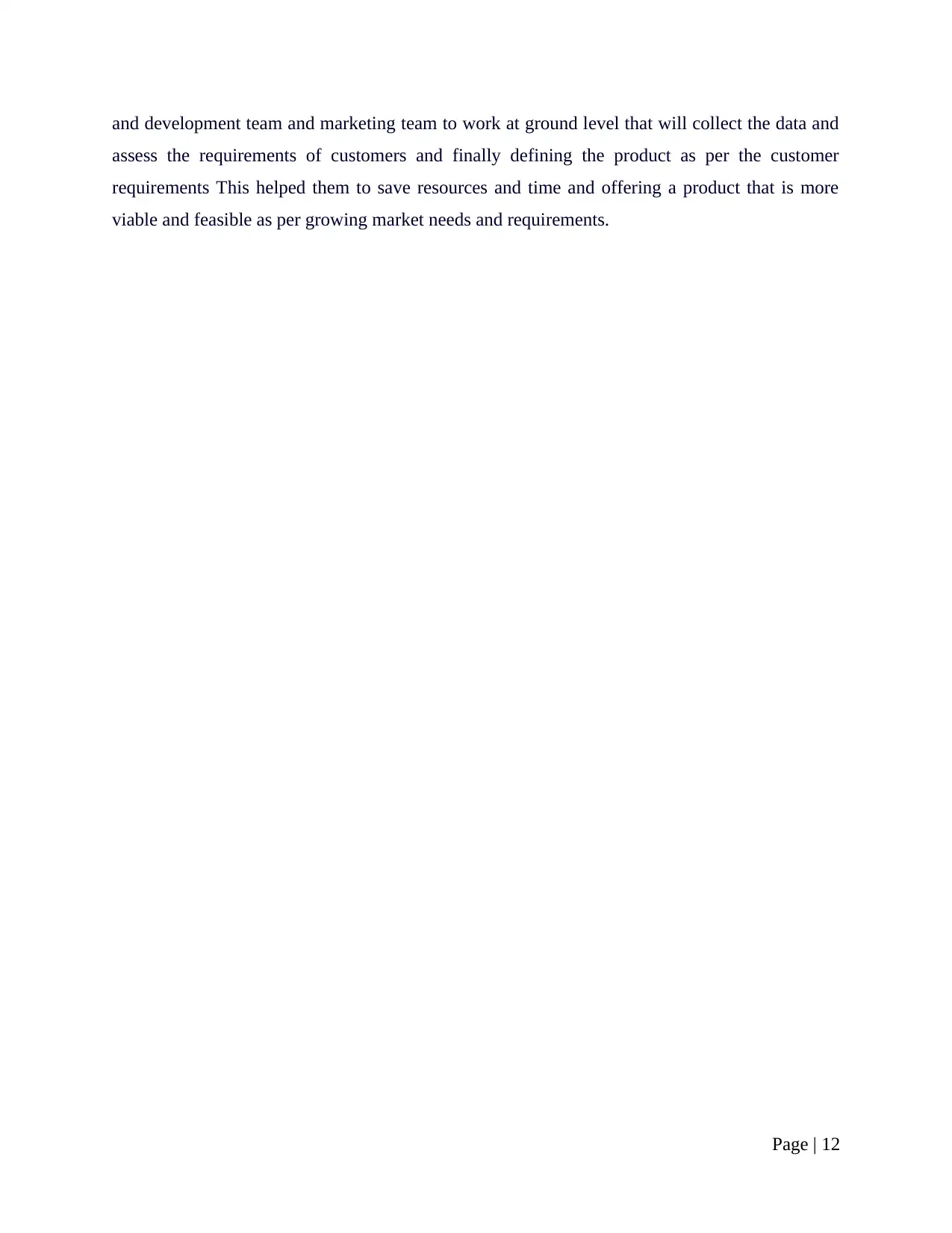
and development team and marketing team to work at ground level that will collect the data and
assess the requirements of customers and finally defining the product as per the customer
requirements This helped them to save resources and time and offering a product that is more
viable and feasible as per growing market needs and requirements.
Page | 12
assess the requirements of customers and finally defining the product as per the customer
requirements This helped them to save resources and time and offering a product that is more
viable and feasible as per growing market needs and requirements.
Page | 12

Chapter 3: Research Analysis and Recommendations
Primark followed the recommendations, which were formulated while implementing project
management plan. The company made further price regulations by identifying potential suppliers
and market, which can provide them the same product having a same quality standard at fewer
prices. This helped them to control the increasing price fluctuations without compromising and
compensating the quality standards. The suppliers agreed to follow the guidelines and comply
with the environmental, ethical conduct. The company prioritized the use of eco-friendly and
recyclable products and packaging material, which helped them to raise more awareness in the
public domain. Primark was criticized heavily due to unethical working conditions in their
certain production units that cost them to lose valuable customers. The company tackled this
setback by engaging more rigorous legal agreements that define each and every aspect of
working criteria. This helped and forced their manufacturing partners to strictly adhere to the set
regulations, otherwise it can be resolved through the litigation process and the side violating the
agreement will suffer from greater financial loss and may lose license for manufacturing in
future also. The company initiated several surprise audits at different supplier locations by
defining various audit teams that visited these units to determine the conditions and getting
feedback from the employees and the workers. The audits covered proper implementation of
guidelines and labor laws. The company also provided medical assistance to those employees,
who suffered injury while at work and validated the information as the data can be easily forged.
All these strict measures taken by Primark helped them to regulate the entire process of supply
chain management.
Tools and Techniques used: -
Primark implemented the project management in four different phases which comprises initiating
the project, planning regarding the project proposal and management, executing the project and
exiting/ closing the project. Each stage has different techniques being used and followed and is
explained below: -
Initiating the project includes
Establishing and defining a project initiation team, which will help Primark to carry
project activities.
Page | 13
Primark followed the recommendations, which were formulated while implementing project
management plan. The company made further price regulations by identifying potential suppliers
and market, which can provide them the same product having a same quality standard at fewer
prices. This helped them to control the increasing price fluctuations without compromising and
compensating the quality standards. The suppliers agreed to follow the guidelines and comply
with the environmental, ethical conduct. The company prioritized the use of eco-friendly and
recyclable products and packaging material, which helped them to raise more awareness in the
public domain. Primark was criticized heavily due to unethical working conditions in their
certain production units that cost them to lose valuable customers. The company tackled this
setback by engaging more rigorous legal agreements that define each and every aspect of
working criteria. This helped and forced their manufacturing partners to strictly adhere to the set
regulations, otherwise it can be resolved through the litigation process and the side violating the
agreement will suffer from greater financial loss and may lose license for manufacturing in
future also. The company initiated several surprise audits at different supplier locations by
defining various audit teams that visited these units to determine the conditions and getting
feedback from the employees and the workers. The audits covered proper implementation of
guidelines and labor laws. The company also provided medical assistance to those employees,
who suffered injury while at work and validated the information as the data can be easily forged.
All these strict measures taken by Primark helped them to regulate the entire process of supply
chain management.
Tools and Techniques used: -
Primark implemented the project management in four different phases which comprises initiating
the project, planning regarding the project proposal and management, executing the project and
exiting/ closing the project. Each stage has different techniques being used and followed and is
explained below: -
Initiating the project includes
Establishing and defining a project initiation team, which will help Primark to carry
project activities.
Page | 13
Secure Best Marks with AI Grader
Need help grading? Try our AI Grader for instant feedback on your assignments.

Customer relationship building parameter will help the company to assess different
segments to build long term relationships.
Formulating project initiation plan technique involves defining various activities teams
and stakeholders, which aim to cover the set goals and objectives.
Defining management protocols and guidelines technique helped Primark to assess and
channelize their resources in the most effective way.
Defining project management environment and workbook technique helped Primark to
keep track of all the information and formulating strategies based on environment
sustainability and stability.
Planning regarding the project proposal and management includes several techniques
The first technique lay emphasis on defining the project scope, its feasibility and alternate
steps to combat feedback inhibitions. This technique allows Primark to answer certain
questions like How, When and Why regarding the project.
Primark divided the project into multiple tasks so as they can be covered and completed
with more efficiency.
Primark can now easily access the resource utilization and can subsequently formulate an
efficient resource plan.
Primark can simply develop a preliminary schedule that can define timeframes for
different tasks.
Primark has established a successful communication channel throughout the supply chain
management and have standardized various procedures and protocols.
Primark critically analyzed different risk factors that can evolve during the
implementation of the project management plan and has formulated various strategies to
tackle them.
Executing the project includes several techniques
Primark in this stage has initiated the project start up complying to the set protocols and
guidelines. The role and duties have already been developed and formulated, which
helped them to conserve time and resources.
Primark can correlate the project process as per designed plan and timeframe.
Primark can implement any changes in this stage if required.
Page | 14
segments to build long term relationships.
Formulating project initiation plan technique involves defining various activities teams
and stakeholders, which aim to cover the set goals and objectives.
Defining management protocols and guidelines technique helped Primark to assess and
channelize their resources in the most effective way.
Defining project management environment and workbook technique helped Primark to
keep track of all the information and formulating strategies based on environment
sustainability and stability.
Planning regarding the project proposal and management includes several techniques
The first technique lay emphasis on defining the project scope, its feasibility and alternate
steps to combat feedback inhibitions. This technique allows Primark to answer certain
questions like How, When and Why regarding the project.
Primark divided the project into multiple tasks so as they can be covered and completed
with more efficiency.
Primark can now easily access the resource utilization and can subsequently formulate an
efficient resource plan.
Primark can simply develop a preliminary schedule that can define timeframes for
different tasks.
Primark has established a successful communication channel throughout the supply chain
management and have standardized various procedures and protocols.
Primark critically analyzed different risk factors that can evolve during the
implementation of the project management plan and has formulated various strategies to
tackle them.
Executing the project includes several techniques
Primark in this stage has initiated the project start up complying to the set protocols and
guidelines. The role and duties have already been developed and formulated, which
helped them to conserve time and resources.
Primark can correlate the project process as per designed plan and timeframe.
Primark can implement any changes in this stage if required.
Page | 14

Primark has made it mandatory for their stakeholders to share information at all times.
Exiting/ closing the project includes post project reviews and suggestions. This part is very
important and valuable as it set parameters and guidelines while formulating the framework
for the next project requirement. All these techniques and phases implemented in the project
management plan helps the project teams to validate and complete the set targets and goals
complying with customer needs and requirements, more emphasis on environment and
customer needs rather than profit margins, helps Primark to build effective teams that can
meet tightest deadlines and handle extensive pressure, working domain in wider areas rather
than in restricted zone, helps Primark to assess resources and cost before engaging into any
project, meet tightest deadlines and time constraints, helps Primark to assess risks and
difficulties and successfully formulating measures and strategies to combat them and lastly
establishing a trust and dependency relation with the customer.
Page | 15
Exiting/ closing the project includes post project reviews and suggestions. This part is very
important and valuable as it set parameters and guidelines while formulating the framework
for the next project requirement. All these techniques and phases implemented in the project
management plan helps the project teams to validate and complete the set targets and goals
complying with customer needs and requirements, more emphasis on environment and
customer needs rather than profit margins, helps Primark to build effective teams that can
meet tightest deadlines and handle extensive pressure, working domain in wider areas rather
than in restricted zone, helps Primark to assess resources and cost before engaging into any
project, meet tightest deadlines and time constraints, helps Primark to assess risks and
difficulties and successfully formulating measures and strategies to combat them and lastly
establishing a trust and dependency relation with the customer.
Page | 15
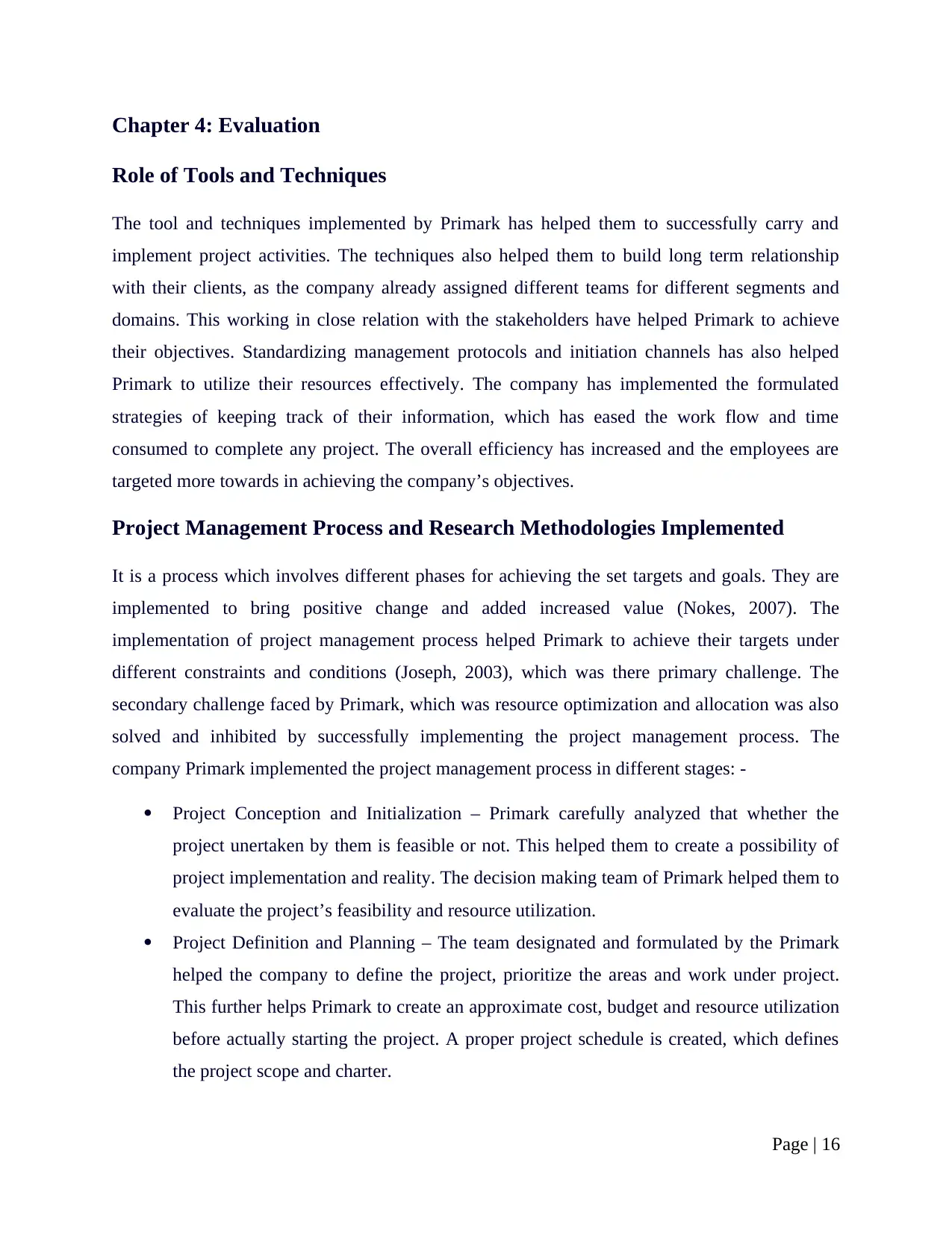
Chapter 4: Evaluation
Role of Tools and Techniques
The tool and techniques implemented by Primark has helped them to successfully carry and
implement project activities. The techniques also helped them to build long term relationship
with their clients, as the company already assigned different teams for different segments and
domains. This working in close relation with the stakeholders have helped Primark to achieve
their objectives. Standardizing management protocols and initiation channels has also helped
Primark to utilize their resources effectively. The company has implemented the formulated
strategies of keeping track of their information, which has eased the work flow and time
consumed to complete any project. The overall efficiency has increased and the employees are
targeted more towards in achieving the company’s objectives.
Project Management Process and Research Methodologies Implemented
It is a process which involves different phases for achieving the set targets and goals. They are
implemented to bring positive change and added increased value (Nokes, 2007). The
implementation of project management process helped Primark to achieve their targets under
different constraints and conditions (Joseph, 2003), which was there primary challenge. The
secondary challenge faced by Primark, which was resource optimization and allocation was also
solved and inhibited by successfully implementing the project management process. The
company Primark implemented the project management process in different stages: -
Project Conception and Initialization – Primark carefully analyzed that whether the
project unertaken by them is feasible or not. This helped them to create a possibility of
project implementation and reality. The decision making team of Primark helped them to
evaluate the project’s feasibility and resource utilization.
Project Definition and Planning – The team designated and formulated by the Primark
helped the company to define the project, prioritize the areas and work under project.
This further helps Primark to create an approximate cost, budget and resource utilization
before actually starting the project. A proper project schedule is created, which defines
the project scope and charter.
Page | 16
Role of Tools and Techniques
The tool and techniques implemented by Primark has helped them to successfully carry and
implement project activities. The techniques also helped them to build long term relationship
with their clients, as the company already assigned different teams for different segments and
domains. This working in close relation with the stakeholders have helped Primark to achieve
their objectives. Standardizing management protocols and initiation channels has also helped
Primark to utilize their resources effectively. The company has implemented the formulated
strategies of keeping track of their information, which has eased the work flow and time
consumed to complete any project. The overall efficiency has increased and the employees are
targeted more towards in achieving the company’s objectives.
Project Management Process and Research Methodologies Implemented
It is a process which involves different phases for achieving the set targets and goals. They are
implemented to bring positive change and added increased value (Nokes, 2007). The
implementation of project management process helped Primark to achieve their targets under
different constraints and conditions (Joseph, 2003), which was there primary challenge. The
secondary challenge faced by Primark, which was resource optimization and allocation was also
solved and inhibited by successfully implementing the project management process. The
company Primark implemented the project management process in different stages: -
Project Conception and Initialization – Primark carefully analyzed that whether the
project unertaken by them is feasible or not. This helped them to create a possibility of
project implementation and reality. The decision making team of Primark helped them to
evaluate the project’s feasibility and resource utilization.
Project Definition and Planning – The team designated and formulated by the Primark
helped the company to define the project, prioritize the areas and work under project.
This further helps Primark to create an approximate cost, budget and resource utilization
before actually starting the project. A proper project schedule is created, which defines
the project scope and charter.
Page | 16
Paraphrase This Document
Need a fresh take? Get an instant paraphrase of this document with our AI Paraphraser

Project Launch and Execution – After successfully detrmining the feasibility and
resource need, Primark can asssign different teams that will cover different domains
under the project. The employees in the team are throughly described reagrding their
duties and responsibiities. This helps them to create a smother work flow and a proper
supply chain management.
Project Performance and Control – The managers assigned can now efficently relate the
data to the success of the project, whhich was previously very difficult for the company
to assess as CSR activities were not implemented properly and there was no project
management process involved.
Project Close – Primark after completing the project can seek for clients approval and
feedback. This will help them to improvie their strategies.
Project Outcome
Primark successfully adapted and implemented various project management related strategies
and approaches that helped them to overcome the problems faced by the company. The company
has successfully incorporated corporate social responsibility into its work flow, which has helped
them to make positive public relations and implementing a moral, social, corporate and
environmental code of conduct which limits the company's role and involvement in legal matters
as they exhibit consumer trust and benefits. To maintain quality standards and providing the best
from the least. This has helped Primark to comply with environment safety, as all of their
products pass through several quality assurance and quality control barricades before stepping
into the market. The company has achieved their objective of making the packaging and
industrial set up to be environment friendly and implicating more focus on renewable resources.
The project management process designed has helped them to provide services without charge to
poor or the persons in need. The company has strictly imposed and implemented labor laws and
working conditions to safeguard the health and economic background of workers. It has also
provided free medical assistance to workers while engaging in an accident during work. Primark
has formulated several employee friendly policies to make positive work environment culture,
which was earlier a bigger problem for them.
Page | 17
resource need, Primark can asssign different teams that will cover different domains
under the project. The employees in the team are throughly described reagrding their
duties and responsibiities. This helps them to create a smother work flow and a proper
supply chain management.
Project Performance and Control – The managers assigned can now efficently relate the
data to the success of the project, whhich was previously very difficult for the company
to assess as CSR activities were not implemented properly and there was no project
management process involved.
Project Close – Primark after completing the project can seek for clients approval and
feedback. This will help them to improvie their strategies.
Project Outcome
Primark successfully adapted and implemented various project management related strategies
and approaches that helped them to overcome the problems faced by the company. The company
has successfully incorporated corporate social responsibility into its work flow, which has helped
them to make positive public relations and implementing a moral, social, corporate and
environmental code of conduct which limits the company's role and involvement in legal matters
as they exhibit consumer trust and benefits. To maintain quality standards and providing the best
from the least. This has helped Primark to comply with environment safety, as all of their
products pass through several quality assurance and quality control barricades before stepping
into the market. The company has achieved their objective of making the packaging and
industrial set up to be environment friendly and implicating more focus on renewable resources.
The project management process designed has helped them to provide services without charge to
poor or the persons in need. The company has strictly imposed and implemented labor laws and
working conditions to safeguard the health and economic background of workers. It has also
provided free medical assistance to workers while engaging in an accident during work. Primark
has formulated several employee friendly policies to make positive work environment culture,
which was earlier a bigger problem for them.
Page | 17
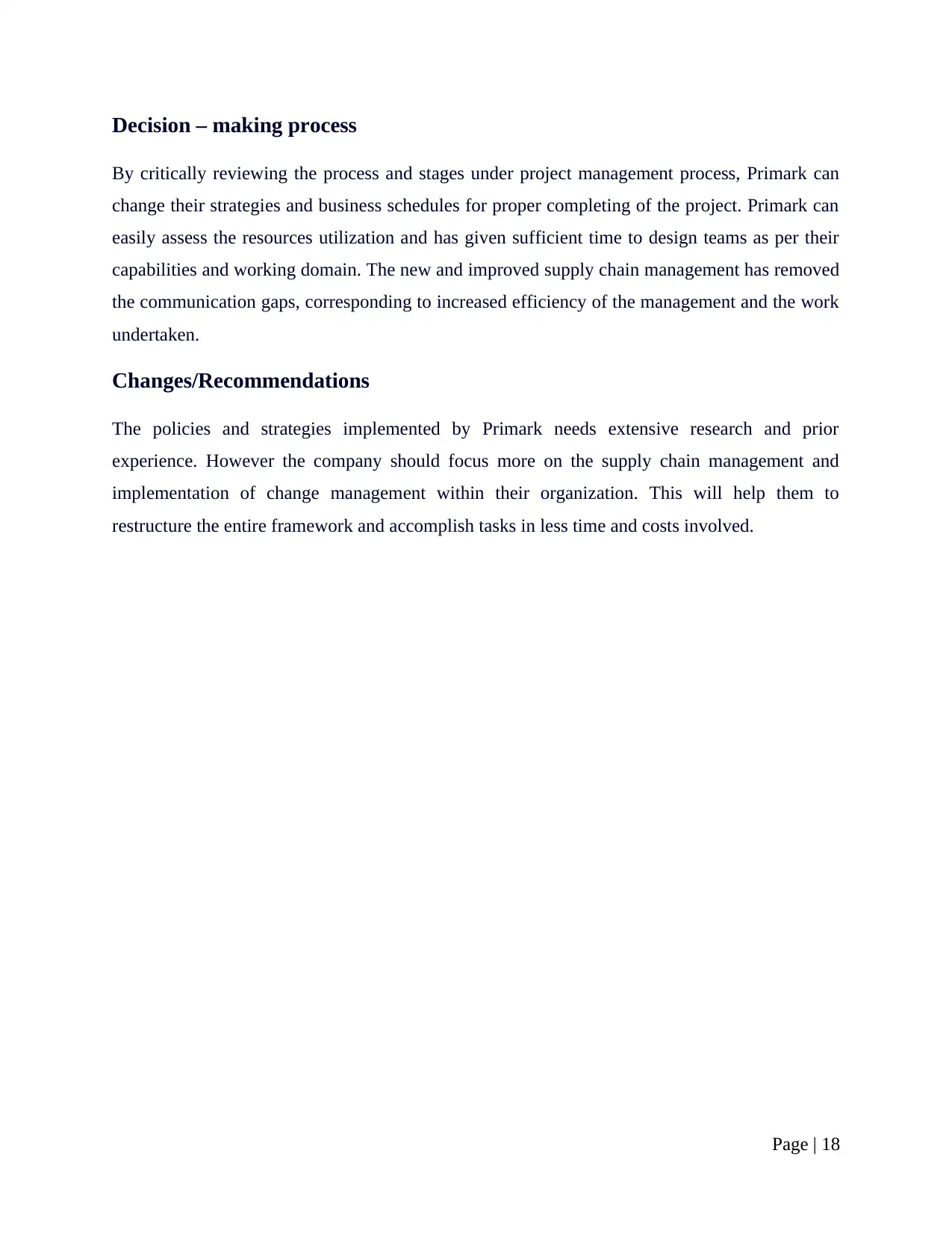
Decision – making process
By critically reviewing the process and stages under project management process, Primark can
change their strategies and business schedules for proper completing of the project. Primark can
easily assess the resources utilization and has given sufficient time to design teams as per their
capabilities and working domain. The new and improved supply chain management has removed
the communication gaps, corresponding to increased efficiency of the management and the work
undertaken.
Changes/Recommendations
The policies and strategies implemented by Primark needs extensive research and prior
experience. However the company should focus more on the supply chain management and
implementation of change management within their organization. This will help them to
restructure the entire framework and accomplish tasks in less time and costs involved.
Page | 18
By critically reviewing the process and stages under project management process, Primark can
change their strategies and business schedules for proper completing of the project. Primark can
easily assess the resources utilization and has given sufficient time to design teams as per their
capabilities and working domain. The new and improved supply chain management has removed
the communication gaps, corresponding to increased efficiency of the management and the work
undertaken.
Changes/Recommendations
The policies and strategies implemented by Primark needs extensive research and prior
experience. However the company should focus more on the supply chain management and
implementation of change management within their organization. This will help them to
restructure the entire framework and accomplish tasks in less time and costs involved.
Page | 18

Conclusion
Primark has worked extensively for the welfare of public and following ethics to be eco-friendly.
However, the instances that got highlighted due to poor labor law implementation for the
workers working in supplier countries, the company was forced to revise their policies as it is
opposite to their working conduct and policies. Primark effectively and immediately
implemented new project management plan and policies to overcome the depreciating condition,
which helped them to maintain their brand image and value despite incurring a severe loss. The
company now follows a rigorous approach towards their workers and continuously assess their
suppliers on a timely basis. Primark has incorporated strict legal agreements with its suppliers to
comply with the standards both at national and international level.
Page | 19
Primark has worked extensively for the welfare of public and following ethics to be eco-friendly.
However, the instances that got highlighted due to poor labor law implementation for the
workers working in supplier countries, the company was forced to revise their policies as it is
opposite to their working conduct and policies. Primark effectively and immediately
implemented new project management plan and policies to overcome the depreciating condition,
which helped them to maintain their brand image and value despite incurring a severe loss. The
company now follows a rigorous approach towards their workers and continuously assess their
suppliers on a timely basis. Primark has incorporated strict legal agreements with its suppliers to
comply with the standards both at national and international level.
Page | 19
Secure Best Marks with AI Grader
Need help grading? Try our AI Grader for instant feedback on your assignments.
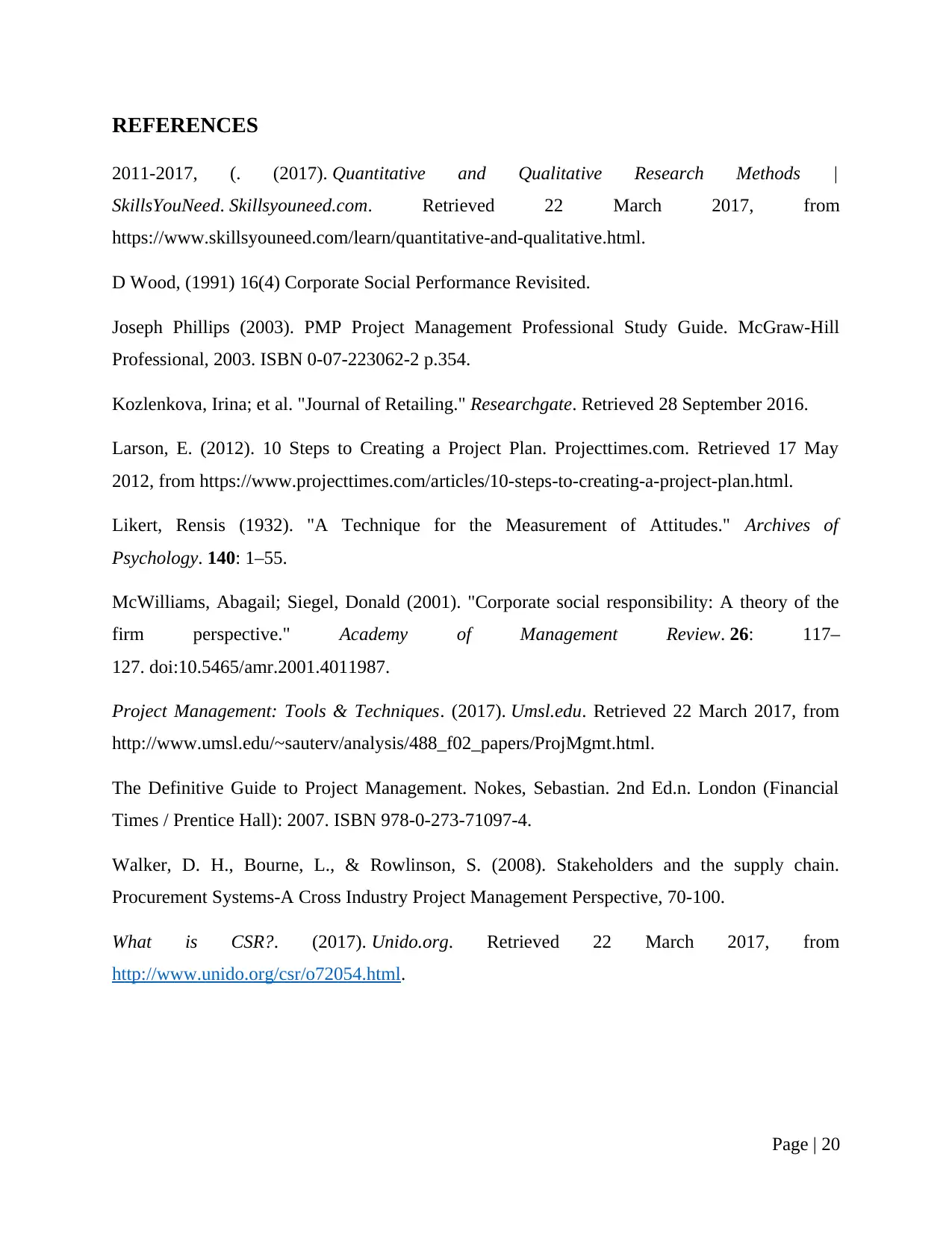
REFERENCES
2011-2017, (. (2017). Quantitative and Qualitative Research Methods |
SkillsYouNeed. Skillsyouneed.com. Retrieved 22 March 2017, from
https://www.skillsyouneed.com/learn/quantitative-and-qualitative.html.
D Wood, (1991) 16(4) Corporate Social Performance Revisited.
Joseph Phillips (2003). PMP Project Management Professional Study Guide. McGraw-Hill
Professional, 2003. ISBN 0-07-223062-2 p.354.
Kozlenkova, Irina; et al. "Journal of Retailing." Researchgate. Retrieved 28 September 2016.
Larson, E. (2012). 10 Steps to Creating a Project Plan. Projecttimes.com. Retrieved 17 May
2012, from https://www.projecttimes.com/articles/10-steps-to-creating-a-project-plan.html.
Likert, Rensis (1932). "A Technique for the Measurement of Attitudes." Archives of
Psychology. 140: 1–55.
McWilliams, Abagail; Siegel, Donald (2001). "Corporate social responsibility: A theory of the
firm perspective." Academy of Management Review. 26: 117–
127. doi:10.5465/amr.2001.4011987.
Project Management: Tools & Techniques. (2017). Umsl.edu. Retrieved 22 March 2017, from
http://www.umsl.edu/~sauterv/analysis/488_f02_papers/ProjMgmt.html.
The Definitive Guide to Project Management. Nokes, Sebastian. 2nd Ed.n. London (Financial
Times / Prentice Hall): 2007. ISBN 978-0-273-71097-4.
Walker, D. H., Bourne, L., & Rowlinson, S. (2008). Stakeholders and the supply chain.
Procurement Systems-A Cross Industry Project Management Perspective, 70-100.
What is CSR?. (2017). Unido.org. Retrieved 22 March 2017, from
http://www.unido.org/csr/o72054.html.
Page | 20
2011-2017, (. (2017). Quantitative and Qualitative Research Methods |
SkillsYouNeed. Skillsyouneed.com. Retrieved 22 March 2017, from
https://www.skillsyouneed.com/learn/quantitative-and-qualitative.html.
D Wood, (1991) 16(4) Corporate Social Performance Revisited.
Joseph Phillips (2003). PMP Project Management Professional Study Guide. McGraw-Hill
Professional, 2003. ISBN 0-07-223062-2 p.354.
Kozlenkova, Irina; et al. "Journal of Retailing." Researchgate. Retrieved 28 September 2016.
Larson, E. (2012). 10 Steps to Creating a Project Plan. Projecttimes.com. Retrieved 17 May
2012, from https://www.projecttimes.com/articles/10-steps-to-creating-a-project-plan.html.
Likert, Rensis (1932). "A Technique for the Measurement of Attitudes." Archives of
Psychology. 140: 1–55.
McWilliams, Abagail; Siegel, Donald (2001). "Corporate social responsibility: A theory of the
firm perspective." Academy of Management Review. 26: 117–
127. doi:10.5465/amr.2001.4011987.
Project Management: Tools & Techniques. (2017). Umsl.edu. Retrieved 22 March 2017, from
http://www.umsl.edu/~sauterv/analysis/488_f02_papers/ProjMgmt.html.
The Definitive Guide to Project Management. Nokes, Sebastian. 2nd Ed.n. London (Financial
Times / Prentice Hall): 2007. ISBN 978-0-273-71097-4.
Walker, D. H., Bourne, L., & Rowlinson, S. (2008). Stakeholders and the supply chain.
Procurement Systems-A Cross Industry Project Management Perspective, 70-100.
What is CSR?. (2017). Unido.org. Retrieved 22 March 2017, from
http://www.unido.org/csr/o72054.html.
Page | 20
1 out of 20
Related Documents
Your All-in-One AI-Powered Toolkit for Academic Success.
+13062052269
info@desklib.com
Available 24*7 on WhatsApp / Email
![[object Object]](/_next/static/media/star-bottom.7253800d.svg)
Unlock your academic potential
© 2024 | Zucol Services PVT LTD | All rights reserved.




